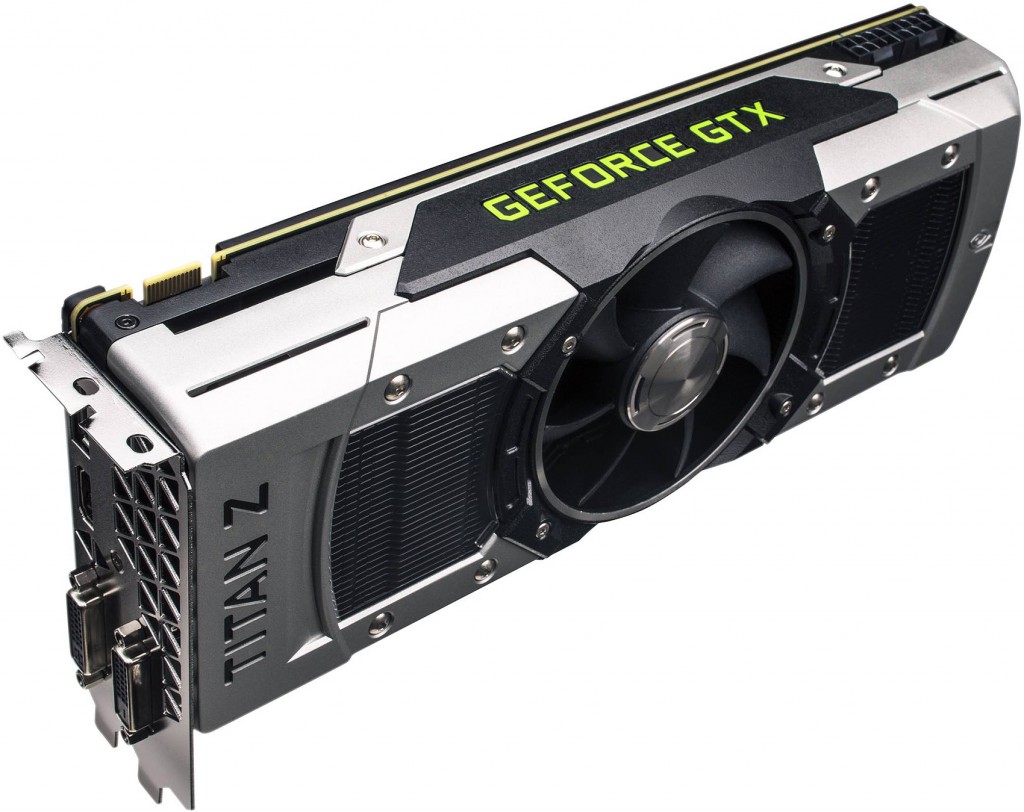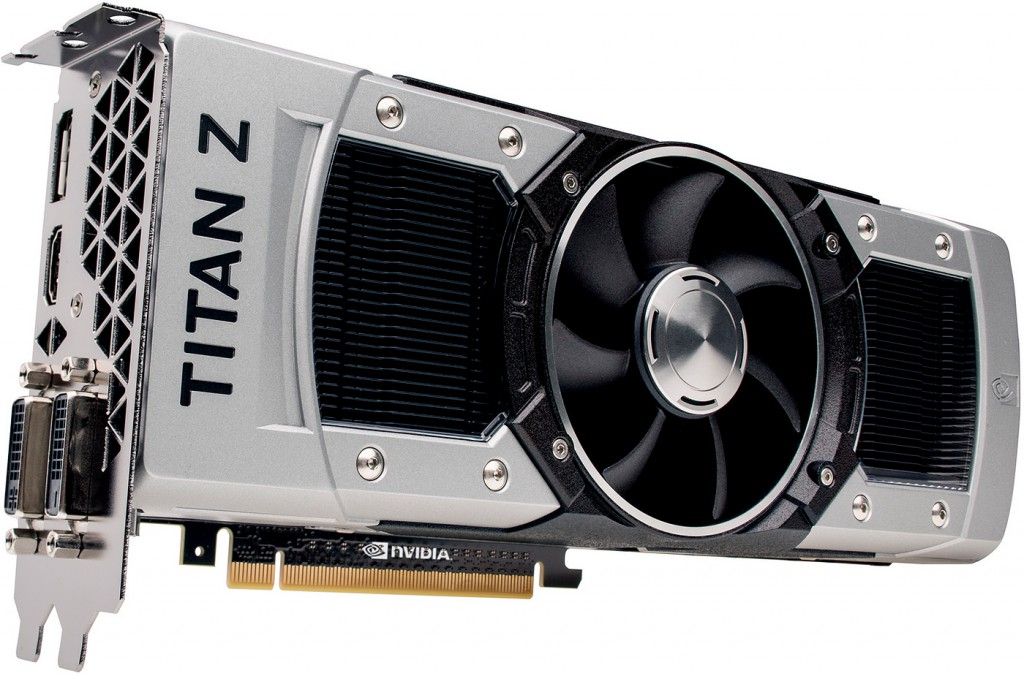It has been a week since Nvidia Corp. and its partners finally started to sell the GeForce GTX Titan Z graphics cards powered by two GK110 graphics processing units. The graphics solution costs whopping $2999 in the U.S., £2399.99 in the UK and around €3000 in Europe. While the price and technical specifications of the product are known, an interesting thing is that almost nobody knows how exactly it performs. The reason? There are no reviews of the Titan Z! Not a single one.
When the board was announced at the GPU Technology Conference in March, it was proclaimed to be the world’s highest-performing consumer-class graphics solution that features two most complex graphics processing units ever made as well as 12GB of fast GDDR5 memory. Thanks to 5760 stream processors in total, the Titan Z card features compute performance of over 8TFLOPS, which, at the time, was outstanding. The GeForce GTX Titan Z was not expected to have any rivals, so the $3000 price-tag was justified, at least to a certain degree.
But just days after Nvidia demonstrated its Titan Z, the first rumours about specifications of a dual-chip graphics card from AMD – the Radeon R9 295X2 – started to show up. The Radeon R9 295X2 was formally launched on the 8th of April and was released commercially on the 21st of April, 2014, about two months ahead of the GeForce GTX Titan Z. But a bigger problem for Nvidia was that the Radeon R9 295X2 offered 11TFLOPS of compute power and potentially higher performance in games.
The reviews of the R9 295X2 clearly demonstrated that a couple of the GeForce GTX Titan Black graphics cards in SLI easily outperform AMD’s dual-chip flagship. However, performance of the GTX Titan Z was projected to be lower than that of two Titan Blacks in SLI. Therefore, it was unclear whether the GTX Titan Z would be faster compared to the Radeon R9 295X2 in video games or not.
The GeForce GTX Titan Z was expected to emerge on the market in late April, but it did not. Unofficial sources close to Nvidia said that the company was refining its drivers in order to beat the Radeon R9 295X2 and justify its higher price.
The GeForce GTX Titan Z graphics cards are finally available now, the new drivers with improved SLI multi-GPU scalability are here as well. Yet, we still have no idea whether the Titan Z is faster or slower compared to the Radeon R9 295X2 due to lack of reviews from mainstream web-sites. Nvidia simply does not provide the cards for testing.
The most interesting thing is the reason why there are no review samples of the GeForce GTX Titan Z. According to Nvidia representatives responsible for reviews, the GTX Titan Z is… not a gaming graphics card. While the board is clearly more than just a graphics adapter for gamers, since it supports double-precision computations and, perhaps, a few other things not present on typical gaming solutions, Nvidia’s own web-site states that the “Titan Z is engineered for next-generation 5K and multi-monitor gaming”.
The GeForce GTX Titan Z is supposed to offer great performance in video games. We are not really sure about its thermals and noise (since it is cooled down by a single fan), but when it comes to performance, it should be good. Will it beat the Radeon R9 295X2? In many cases it most probably will, in other cases it will not (check out the Titan Z's preliminary test results here). The main problem is that the graphics card costs an extreme amount of money for a consumer solution. It costs two times more than its main rival, the Radeon R9 295X2 (which also offers features like double-precision computing, etc.), but it obviously does not offer two times higher performance.
Discuss on our Facebook page, HERE.
KitGuru Says: Back in the days when Nvidia unveiled its first 4-way multi-GPU SLI technology it also officially positioned it as an exclusive solution for boutique PC makers. The first independent reviews showed that there were problems with multi-GPU scaling, compatibility as well as stability. Eventually Nvidia corrected the issues and the quad SLI is a rather popular high-end technology nowadays. We are not sure that anything is wrong about the Titan Z, except its price…
 KitGuru KitGuru.net – Tech News | Hardware News | Hardware Reviews | IOS | Mobile | Gaming | Graphics Cards
KitGuru KitGuru.net – Tech News | Hardware News | Hardware Reviews | IOS | Mobile | Gaming | Graphics Cards





I want see someone to buy this lol btw $2999 in the U.S and €3000 in Europe ? Thats big difference, is it mistake ?
Completely agree. This card is overpriced and I personally don’t see NVIDIA selling many of them at all
Maros – Yeah I think it will be about right. Taxes ect… and US tend to get a better deal. Might be wrong, but I imagine it’s correct buddy.
a mon avis la différence de prix c’est les taxe made in France + un petit supplément pour les américains qui ne pense qu’a nous la faire a l’envers.
Nvidia se fout de la gueule du monde à ce prix là 3000 Eu une carte et meme 1000 Eu de plus que 2 Titan Black!Je préfère largement la R9 295X2 théoriquement plus puissante avec 11 TFLOPS et moins chère rapport qualité/prix.